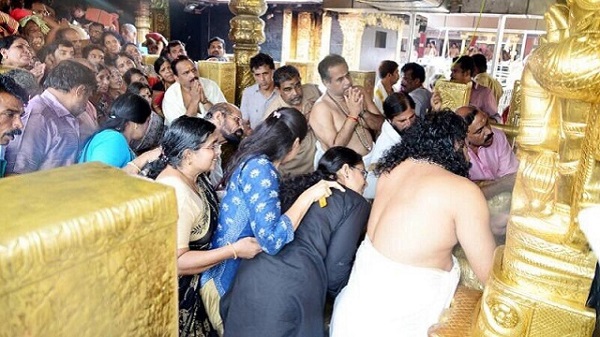
New Delhi, The Supreme Court, pronouncing the verdict Sabarimala temple review, on Thursday expanded the ambit of debate on restricting women’s entry in places of worship in various religions — Hindu, Muslim, Parsi — and included the question on judicial scrutiny of religious practice of female genital mutilation in the Dawoodi Bohra community.
The apex court, through a majority judgement, has also kept the final decision on the Sabarimala review and writ petitions under temporary suspension till a larger bench of seven judges settles the exact role of the court in deciding whether a particular practice is essential or integral to a religion.
The apex court decision came after hearing review petitions on its September 2018 verdict, allowing women of all ages to enter the Sabarimala shrine in Kerala. The Chief Justice’s majority judgement sought judicial scrutiny of religious practices through the lens of constitutional validity.
“Concededly, the debate about the constitutional validity of practices entailing into restriction of entry of women generally in the place of worship is not limited to this case (Sabarimala shrine),” observed the court.
The apex court agreed to club issues connected with constitutional validity with respect to entry of Muslim women in a dargah/mosque, entry of Parsi women married to a non-Parsi into the holy fire place of an ‘Agyari’.
Taking a step further, the apex court posed question about another seminal issue pending before the court: whether a particular practice is essential to a religion or is an integral of the religion, in respect of female genital mutilation in Dawoodi Bohra community.
“It is essential to adhere to judicial discipline and propriety when more than one petition is pending on the same, similar or overlapping issues in the same court for which all cases must proceed together,” observed the court, recommending a larger bench to examine the matter.
The apex court opined that prospect of the issues arising in these cases could be referred to a larger bench, and this possibility cannot be ruled out.
The top court identified seven issues emerging from these cases, which may be referred to seven-judge bench:
(a) the interplay between freedom of religion under Article 25 and 26 of the Constitution; (b) What is the sweep of expression ‘public order, morality and health’ occurring in Article 25(1)?
(c) delineate the contours of morality or constitutional morality in connection with religious beliefs or faith,
(d) To what extent court can enquire into the issue of particular practice in a religion;
(e) meaning of the expression ‘sections of Hindus’ appearing in Article 25(2)(b) of Constitution,
(f) “essential religious practices” of a religious denomination afforded constitutional protection under Article 26, and
(g) permissible extent of judicial recognition to PILs in matters calling into question religious practices of a denomination or a section thereof at the instance of persons who do not belong to such religious denomination.
“The subject review petitions as well as the writ petitions may, accordingly, remain pending until determination of the questions indicated above by a larger bench as may be constituted by the Chief Justice of India”, said a majority bench headed by Chief Justice Ranjan Gogoi.









